Learning to ski as an adult doesn’t have to be overwhelming. The key? Choosing the right gear. For beginners, shorter, lighter skis are easier to control, turn, and carry, making the learning process way more enjoyable. This year, Snowfeet’s lineup of compact skiblades and skiskates is turning heads for their user-friendly design and fun, skate-like feel on the snow. Here’s a quick breakdown of your best options:
- Snowfeet Skiskates (44 cm): Tiny, portable, and great for quick learning. Perfect for absolute beginners. $390.
- Snowfeet Skiblades (65 cm): A step up in length for more stability, but still easy to handle. $450.
- Snowfeet Skiblades (99 cm): Balanced for agility and control, ideal for building confidence. $490.
- Snowfeet Skiblades (120 cm): Longer for smoother turns and better speed, great for advancing skills. $690.
- Rossignol Experience 78 Ca: Full-length skis with solid performance but harder for beginners. Around $500.
- Blizzard Thunderbird SP 7.2: Designed for intermediates, not the easiest for first-timers. $400–$500.
If you’re just starting out, Snowfeet’s shorter, lightweight options are a game-changer. They’re easy to learn on, fit in a backpack, and work with boots you might already own. For a more traditional approach, Rossignol and Blizzard offer full-length skis, but they’re bulkier and harder to master. Keep reading to find the perfect match for your 2025 ski adventures!
How to Choose a Complete Ski Package for Beginners, Renters, New Skiers, and Recreational Skiers
1. Snowfeet* Skiblades (65 cm)
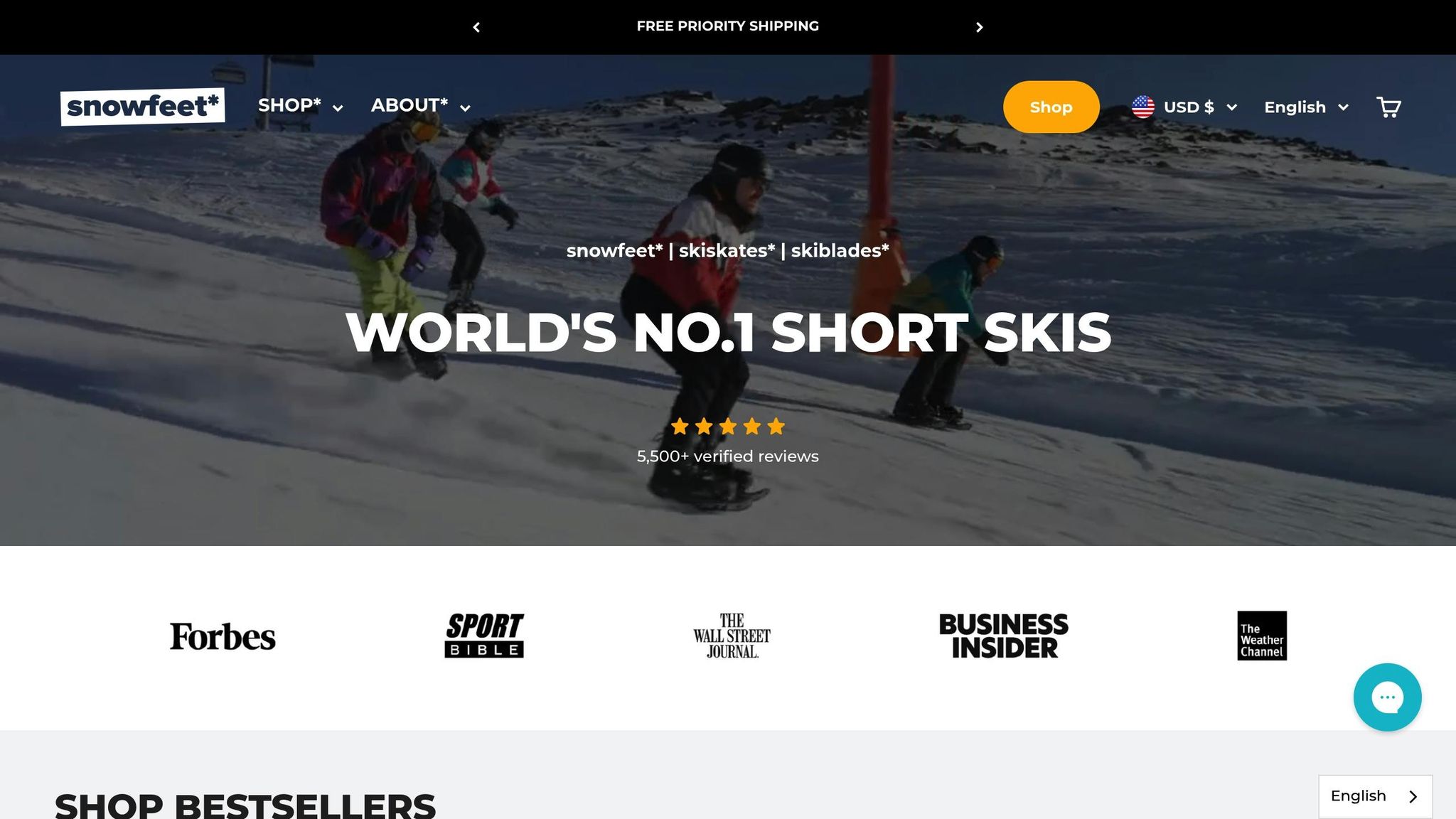
At just 25.6 inches long, the Snowfeet* Skiblades (65 cm) are a fantastic choice for adults stepping into the world of skiing. Their compact size makes them feel more like skating on snow than traditional skiing, which is perfect for anyone who finds full-length skis a bit daunting. Let’s break down why these skiblades are a standout option for beginners.
Length and Control
The 65 cm length is a sweet spot for those new to skiing. As the Snowfeet Team puts it:
"With short skis, turning becomes a breeze... shorter skis give you more control and agility".
This design translates your movements into precise actions, making sharp turns and maintaining balance much easier. Unlike traditional skis that are often 150 cm or longer, these skiblades demand less physical effort to steer and help you stay centered. They’re a popular choice not just for beginners but also for ski instructors and freestyle enthusiasts.
Portability
One of the coolest things about the Snowfeet* Skiblades is how portable they are. Their lightweight, compact design means you can toss them into a backpack with no hassle. Whether you’re hitting the local slopes or heading into the backcountry, these skiblades are a breeze to carry - something traditional skis just can’t compete with.
Required Gear
Another perk? The setup is super simple. These skiblades work with both ski boots and snowboard boots, thanks to adjustable, tool-free bindings. They fit ski boots in US sizes 4.5–14.5 and snowboard boots in US sizes 6–14.5. Plus, they come with safety leashes, which help keep things secure without adding extra costs or complications.
Cost
Starting at $450, the Snowfeet* Skiblades (65 cm) are a budget-friendly way to get into skiing[website]. With a stellar customer rating of 5.0/5 and compatibility with multiple boot types, they’re a solid investment. Compared to traditional ski setups - which often cost over $800 - these skiblades are not only more affordable but also versatile enough to keep enjoying long after you’ve mastered the basics.
2. Snowfeet* Skiblades (99 cm)
The 99 cm Snowfeet* Skiblades offer a step up in stability while keeping the agility that makes shorter skiblades so much fun. At 39 inches long, these skiblades strike a perfect balance between compactness and control, making them a great choice for adults looking to build confidence on the slopes.
Length and Control
These skiblades are designed to translate your movements into sharp, precise turns. Measuring 99 cm in length with dimensions of 11.5 cm at the tip, 8.5 cm at the waist, and 11 cm at the tail, they boast a 6-meter turning radius for quick, responsive handling. The metal edges provide added control, making turns and stops feel natural and easy. Unlike traditional skis from brands like Rossignol or Atomic, which can feel overwhelming for beginners due to their length, these skiblades offer a more approachable experience while still delivering stability and performance.
Portability
One of the standout features of the Snowfeet* Skiblades is their portability. At just 39 inches, they’re much easier to carry than full-length skis. Whether you’re navigating crowded ski lodges or storing them at home, their compact size makes life simpler. Plus, their lightweight build means less strain when hauling gear to and from the slopes.
Required Gear
These skiblades come equipped with release ski bindings and safety brakes, ensuring the skis stay put when released for added safety. If you’re used to rental equipment, you’ll appreciate the familiarity of this setup, which makes the transition to owning your own gear seamless.
Cost
Priced at $490, the Snowfeet* Skiblades offer high-quality craftsmanship without breaking the bank. Handmade in Europe with a certified sustainable wood core and cap construction, they provide a premium skiing experience at a fraction of the cost of traditional setups, which can easily top $1,000. Designed specifically for downhill skiing on slopes and in snow parks, these skiblades deliver performance and value in one compact package.
3. Snowfeet* Skiblades (120 cm)
The 120 cm Snowfeet* Skiblades strike a great balance between stability and agility, making them a solid choice for adults looking to improve their skiing skills. At about 47 inches long, they’re ideal for beginners aiming to master smoother, more confident turns as they move past the basics.
Length and Control
These skiblades deliver the performance of longer skis but with a lighter, more playful feel. Their 120 cm length enhances stability and control compared to shorter blades, making them excellent for carving and picking up speed. Yet, they’re far easier to handle than traditional skis from brands like Head or Elan, which typically measure 59 to 79 inches. The wider tips and tails provide a balanced ride, helping beginners stay steady while allowing for quicker, more responsive movements than standard skis. This combination of control and ease makes them a great option for improving both technique and confidence on the slopes.
Portability
Even though these are the longest skiblades in the Snowfeet* lineup, they’re still much shorter and lighter than regular skis. At under 4 feet long, they’re easy to fit in your car, stash in ski lockers, or carry through crowded areas at the base of the mountain. Their lightweight design also reduces fatigue, so you can practice longer without wearing yourself out.
Required Gear
The 120 cm skiblades are specifically designed to work with ski boots for maximum safety. Unlike the shorter 65–99 cm models, which can accommodate a variety of boot types, this version requires traditional ski boots - bindings for snowboard boots aren’t available for blades over 100 cm. Snowfeet* equips these skiblades with standard release bindings that are secure, user-friendly, and adjustable to fit different boot sizes. This straightforward setup ensures a reliable and safe experience while delivering top-notch performance.
Cost
At $690, the 120 cm Snowfeet* Skiblades offer a high-quality experience without the hefty price tag of traditional ski setups. For comparison, a full ski package from major brands often runs $1,200–$1,500. These skiblades provide an affordable way to get into skiing without sacrificing quality, making them a smart choice for beginners who want solid performance without breaking the bank.
4. Snowfeet* Skiskates (44 cm)
The Snowfeet* Skiskates take a fresh approach to winter sports. Measuring just 44 cm (about 17 inches), they’re perfect for anyone who finds full-length skis a bit intimidating. These compact skates, often called the world's smallest skis, feel more like skating on snow than traditional skiing.
Length and Control
At just 44 cm, these skiskates are all about control and agility. Turning requires very little effort, making them easier to handle than traditional skis from brands like Rossignol or Atomic. The natural maneuverability makes them feel intuitive.
Most people pick up on how to use Skiskates within a single day. Their forgiving design helps prevent catching an edge or losing balance, while their stable stance reduces falls and injuries. This means you can focus more on having fun and less on worrying about wiping out.
Portability
One of the big perks of Skiskates is their portability. Their compact size means you can toss them into a backpack, car trunk, or even an overhead compartment. Plus, they’re lightweight, so carrying them around is a breeze. Whether you’re heading to the slopes or just exploring snowy trails, they’re easy to bring along.
Required Gear
The Skiskates are designed to work with a range of boots, offering plenty of flexibility. They’re compatible with ski boots (sizes 4.5–14.5 US) and snowboard boots (sizes 6–14.5 US). The bindings are adjustable without tools, feature safety leashes, and have anti-slip surfaces for a secure fit. This versatility makes them a great option for anyone looking to keep things simple and affordable.
Cost
Priced at $390, the Snowfeet* Skiskates are a great choice for beginners. Their compatibility with existing boots can save you money on extra gear, making them a budget-friendly way to dive into winter sports without cutting corners on quality or safety.
sbb-itb-17ade95
5. Rossignol Experience 78 Ca
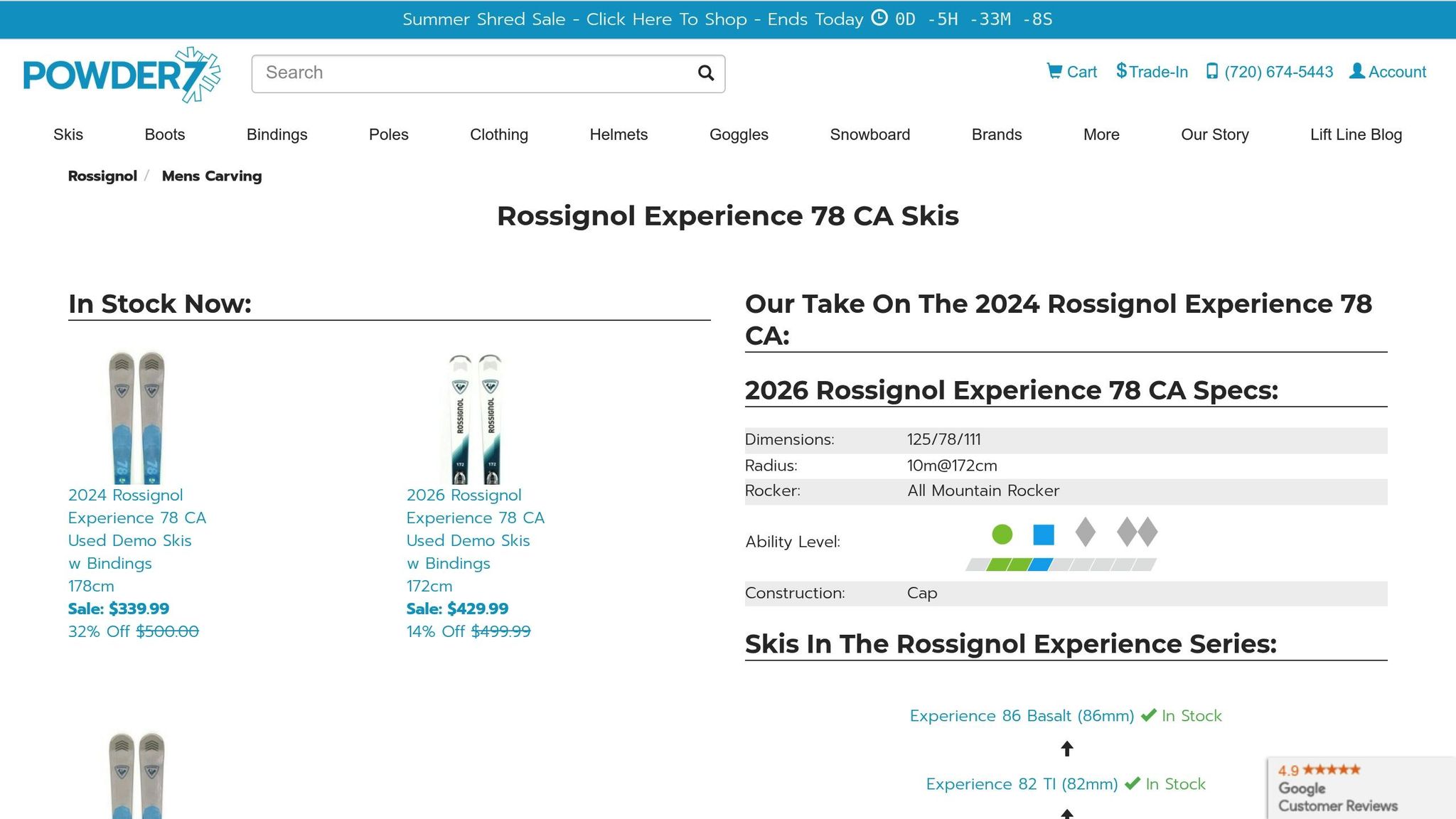
The Rossignol Experience 78 Ca takes a classic approach to skiing, offering solid performance for those learning the ropes. However, its traditional full-length design can be a bit challenging for beginners who are just starting out. Compared to the compact and lightweight Snowfeet* products, these skis provide a more conventional experience but come with their own set of hurdles for newcomers.
Length and Control
The Experience 78 Ca comes in lengths ranging from 57 to 70 inches, which is significantly longer than any Snowfeet* option. While Rossignol's Drive Tip design is aimed at boosting confidence, the longer length demands a higher skill level to manage effectively.
"The confidence-boosting control of our Drive Tip design works with the sidecut for smooth turn initiation and a controlled finish to each turn."
These skis have turning radii between 10 and 16 meters, depending on the length. This means they need more room and greater expertise to maneuver compared to the quick and responsive feel of Snowfeet* products. As one Reddit user, the_gubna, put it: "Those seem like a totally fine set of skis to learn on. By the time you're making carving turns you'll know a lot more about what kind of skis you want." This highlights the Experience 78 Ca as a good starting point but not necessarily the best long-term fit for complete beginners. It’s a stark contrast to the user-friendly, compact design of Snowfeet*.
Portability
Transporting traditional skis like the Experience 78 Ca can be a hassle. Their length and bulk mean you’ll likely need a roof rack or a dedicated ski bag to carry them around. This makes spontaneous trips to the slopes a bit more complicated. On the other hand, Snowfeet* products are compact enough to fit in a backpack or car trunk, making them a much easier option for those on the go.
Required Gear
To use the Experience 78 Ca, you’ll need traditional ski boots and mounted bindings, which adds to both the cost and the complexity of setup. Snowfeet* products, by contrast, are designed to work with boots you might already own, keeping things simple and more budget-friendly.
Cost
While the skis themselves are reasonably priced, the additional expenses for boots, binding installation, and regular maintenance can add up quickly. This makes the overall investment higher than what you’d need for Snowfeet*, which are easier on both your wallet and your time. For beginners looking for simplicity and convenience, Snowfeet* products may feel like a much more approachable choice.
6. Blizzard Thunderbird SP 7.2
The Blizzard Thunderbird SP 7.2 sticks to a classic skiing design, aimed squarely at intermediate skiers. It's a solid choice for those who've nailed the basics and are ready to take their skills up a notch. Let’s dive into the details to see how it stacks up against the more beginner-friendly Snowfeet* lineup.
Length and Control
Measuring 68.5 inches (174 cm) in length, the Thunderbird SP 7.2 is significantly longer than Snowfeet* products, which range from just 17 inches (44 cm) for Skiskates to 47 inches (120 cm) for the largest Skiblades. This added length gives the Thunderbird more stability at high speeds but makes it tougher for beginners to pick up the basics. On the other hand, Snowfeet* products are built for agility and offer a rollerblade-like experience on snow. Their shorter length makes them more forgiving and easier to handle, especially for those just starting out.
Required Gear
To use the Thunderbird SP 7.2, you'll need dedicated alpine boots and bindings. That means an additional investment in proper ski boots, which adds to the overall cost. In contrast, Snowfeet* products are far more flexible. They work with regular winter shoes or snowboard boots you might already own, thanks to their adjustable bindings that attach directly to your footwear. Both options still require basic safety gear like helmets and goggles, but Snowfeet* spares you the expense of specialized boots.
Cost
When it comes to price, the Thunderbird SP 7.2 with TLT10 bindings falls between $399.96 and $499.99, depending on the retailer and any ongoing sales. Factor in the cost of ski boots, binding adjustments, and maintenance, and the total can climb quickly. In comparison, Snowfeet* Skiskates start at just $150, and even their Skiblades - priced between $450 and $767 - can feel like a better deal since they don't require pricey ski boots.
For beginner adults looking for simplicity and a lower upfront cost, the Thunderbird SP 7.2 might seem overly complicated and expensive compared to the all-in-one, beginner-friendly appeal of Snowfeet* products.
Comparison Table
Here’s a quick comparison to highlight the main differences across these products. This table makes it easy to see why Snowfeet* products are such a great choice for beginners.
| Feature | Snowfeet* Skiskates (44 cm) | Snowfeet* Skiblades (65 cm) | Snowfeet* Skiblades (99 cm) | Snowfeet* Skiblades (120 cm) | Rossignol Experience 78 Ca | Blizzard Thunderbird SP 7.2 |
|---|---|---|---|---|---|---|
| Length | 17 inches (44 cm) | 26 inches (65 cm) | 39 inches (99 cm) | 47 inches (120 cm) | 63–67 inches (160–170 cm) | 68.5 inches (174 cm) |
| Weight per Ski | 3.5 lbs (1,600 g) | Lightweight | Lightweight | Lightweight | Heavy | Heavy |
| Price Range | $340–$380 | From $450 | From $490 | $690 | $400–$600 | $400–$500 |
| Required Boots | Ski or snowboard boots | Regular winter boots | Regular winter boots | Regular winter boots | Alpine ski boots | Alpine ski boots |
| Portability | Fits in backpack | Ultra-portable | Ultra-portable | Ultra-portable | Requires ski bag | Requires ski bag |
| Learning Curve | Very easy | Very easy | Very easy | Easy | Steep | Steep |
| Maneuverability | Excellent | Excellent | Excellent | Very good | Limited | Limited |
| Speed Capability | Moderate | Moderate | Good | Very good | High | High |
| Terrain Suitability | Slopes, parks, trails | Slopes, parks, trails | All-mountain | All-mountain | Groomed runs | Groomed runs |
| Construction | Wood core, cap construction | Fiberglass | Fiberglass | Fiberglass | Traditional ski construction | Traditional ski construction |
| Binding System | Adjustable for boots | Adjustable for shoes | Adjustable for shoes | Adjustable for shoes | Requires mounting | Requires mounting |
| Maintenance | Low | Low | Low | Low | High | High |
| Storage | Minimal space | Minimal space | Minimal space | Compact | Large space needed | Large space needed |
Snowfeet* products shine when it comes to convenience and ease of use, especially for beginners. Unlike traditional skis, which require bulky alpine ski boots and dedicated bags for transport, Snowfeet* gear is lightweight, compact, and compatible with regular winter boots. You can literally pack them in a backpack and head straight to the slopes.
The shorter lengths and lighter design also make learning much easier. Beginners can avoid the frustration of a steep learning curve and enjoy a more intuitive skiing experience. Plus, the low-maintenance construction means you’ll spend less time worrying about upkeep and more time enjoying the snow.
In contrast, traditional skis like the Rossignol Experience 78 Ca and Blizzard Thunderbird SP 7.2 demand more effort. They require specialized boots, take up more storage space, and involve a higher level of maintenance. While they excel in speed and performance on groomed runs, they’re not as beginner-friendly.
Snowfeet* gear is all about making skiing accessible and fun. Whether it’s the portability, ease of learning, or the ability to use your existing winter boots, these products take the hassle out of hitting the slopes. If you’re new to skiing or just want a simpler setup, Snowfeet* is a fantastic choice.
Final Recommendations
The table above makes it clear: Snowfeet* stands out as the top choice for U.S. adults learning to ski in 2025. While traditional skis from brands like Rossignol and Blizzard cater to advanced skiers with high-performance needs, they don’t quite offer the beginner-friendly ease that Snowfeet* brings to the table.
Snowfeet* takes skiing back to the basics, making it approachable and fun right from your very first run. Their gear is all about freedom and simplicity. As the Snowfeet Team puts it:
"One of the biggest advantages of skiblades is how easy they are to use. Their shorter length means there's less material to control, making them perfect for beginners or those who may not have a lot of experience on the slopes."
Imagine this: pack your Snowfeet* gear into a backpack, hop in your car, and head to the slopes - no bulky ski bags, no boot rentals, and no fiddling with complex bindings. Plus, you can use your regular winter boots, making your skiing adventure hassle-free. Their compact size also means you can weave through crowded slopes with ease, a huge perk during those busy weekends at American ski resorts.
For absolute beginners, the Snowfeet* Skiskates (44 cm, about 17 inches) are a fantastic option. Starting at $390, they’re designed to be forgiving and easy to control, giving new skiers the confidence they need.
If you’re after something closer to a traditional skiing experience, check out the Snowfeet* Skiblades (65 cm). Priced from $450, they offer that classic carving feel while still being short enough to provide excellent control and build confidence.
With their practicality, portability, and beginner-friendly design, Snowfeet* makes learning to ski in 2025 as smooth and enjoyable as it gets.
FAQs
Why are Snowfeet Skiblades a better choice for beginners compared to traditional skis?
Snowfeet Skiblades bring some awesome perks to the table for beginners, making them a solid choice if you're just getting started. Their shorter length (between 65 cm and 120 cm) makes turning and controlling your movements a breeze. This added control can really boost your confidence as you take on the slopes. Plus, their lightweight build means less strain on your legs, so you can spend more time enjoying the ride without feeling wiped out.
Unlike traditional skis, which can be longer and geared toward speed and advanced techniques, Snowfeet Skiblades focus on simplicity and fun. They’re less daunting, especially for adults who want to ease into skiing without the pressure of mastering complex gear. If you’re after something that’s easy to use, portable, and beginner-friendly, Snowfeet Skiblades are definitely worth considering.
Can I use my snowboard boots with Snowfeet Skiblades, and are there any restrictions?
No, snowboard boots won’t work with Snowfeet Skiblades. They simply don’t fit the bindings. Snowfeet gear is made to pair with lightweight, flexible footwear - think standard ski boots or durable winter boots. Snowboard boots, on the other hand, are too bulky to be compatible.
For the best ride, stick with boots that are comfy, give you good control, and work well with the short, nimble design of Snowfeet Skiblades. This way, you’ll stay safe and have more fun whether you’re just starting out or carving up the slopes.
Why are Snowfeet Skiblades a great choice for adults learning to ski compared to traditional skis?
Snowfeet Skiblades are a great pick for adults just starting out with skiing. Why? They're shorter - typically between 25 and 47 inches - lightweight, and super easy to handle. This makes them way less intimidating than traditional skis, which can be longer, heavier, and designed for speed or advanced techniques. With these skiblades, beginners can feel more in control, build confidence quickly, and enjoy better agility on the slopes without getting overwhelmed.
Unlike traditional skis from brands like Rossignol or Atomic that are built for performance and high-speed stability, Snowfeet Skiblades focus on keeping things simple and fun. Their compact design makes it easier to learn, turn, and just enjoy the ride. If you're after something that's portable, beginner-friendly, and forgiving, Snowfeet Skiblades are a solid choice to kickstart your skiing adventure.





















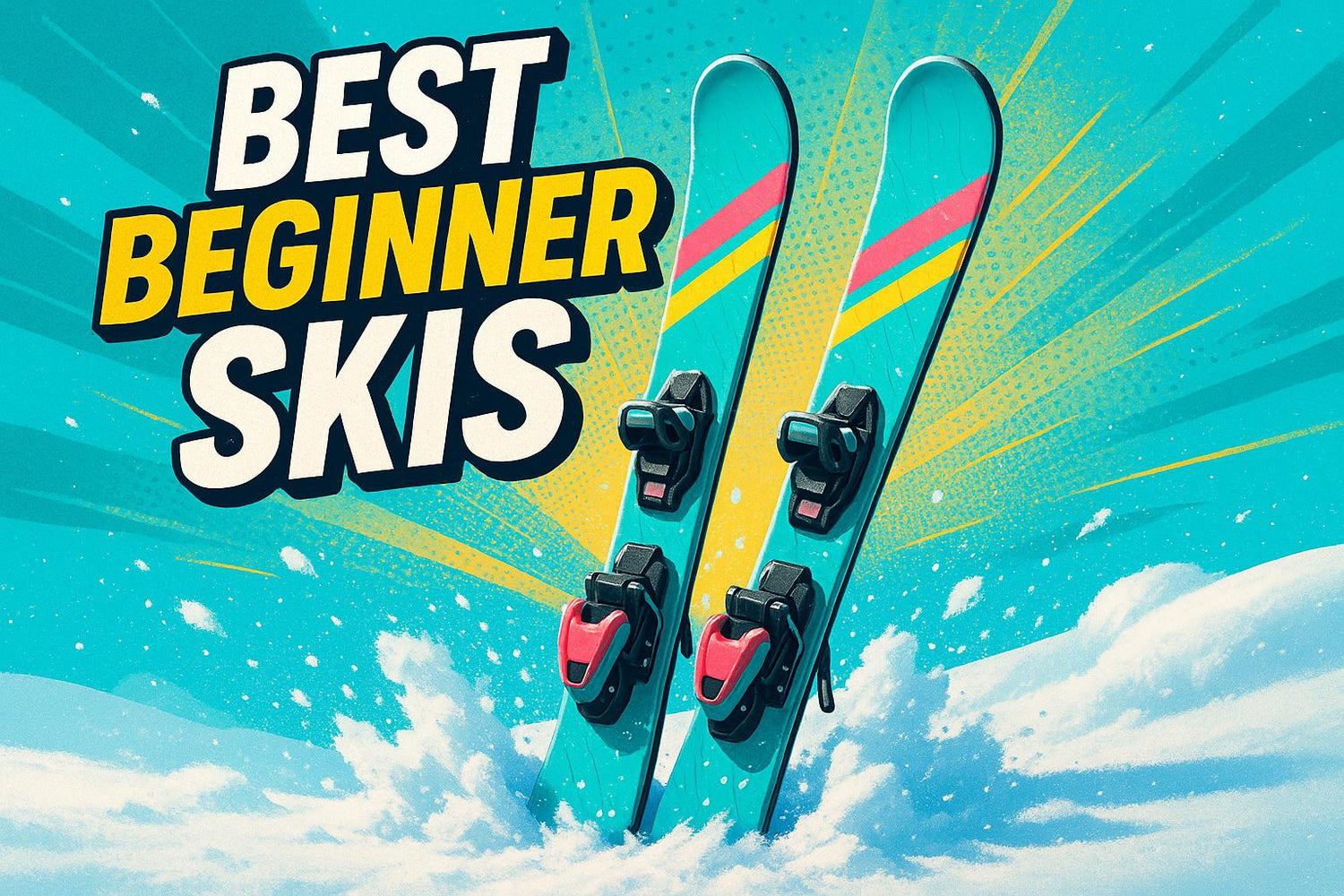
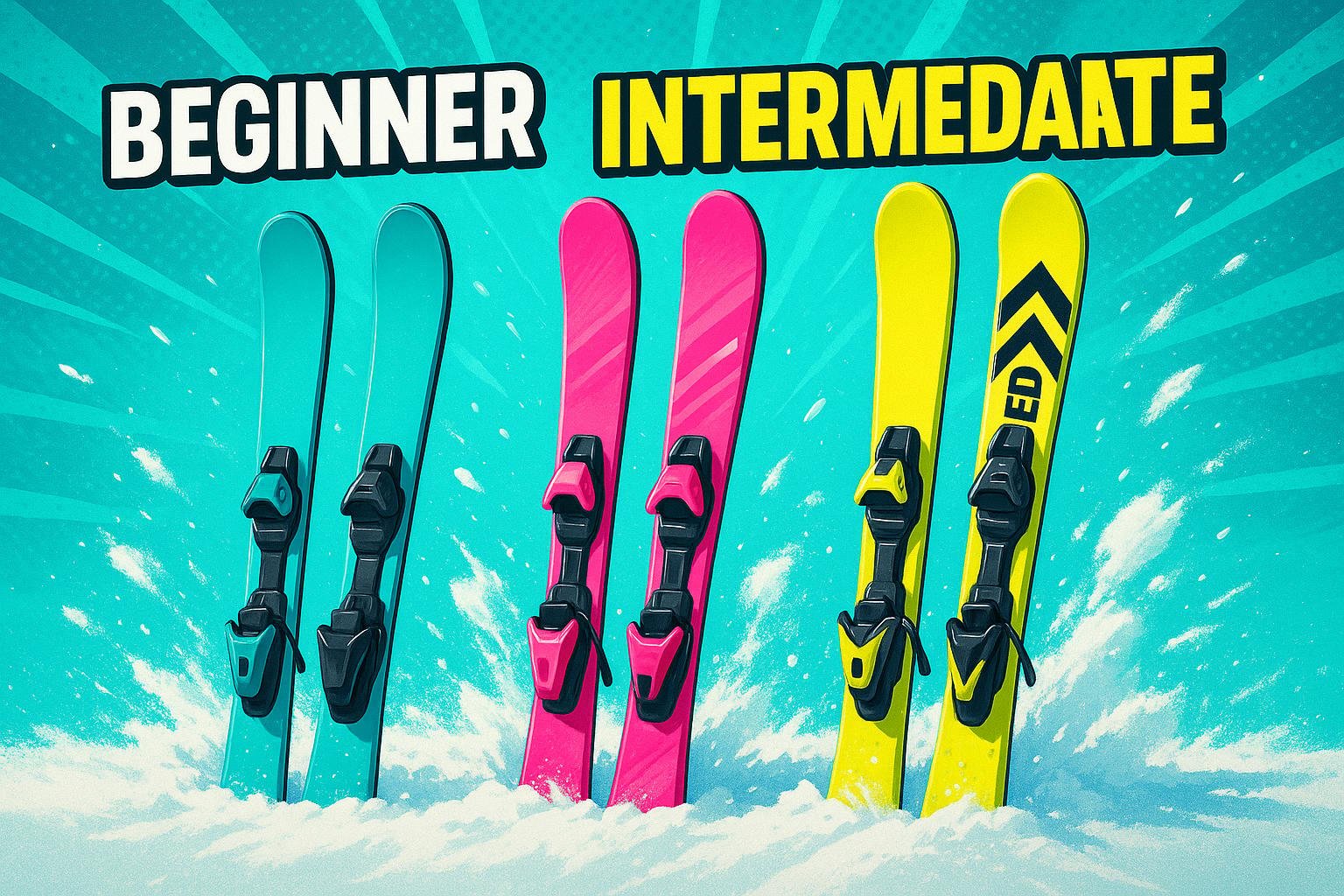
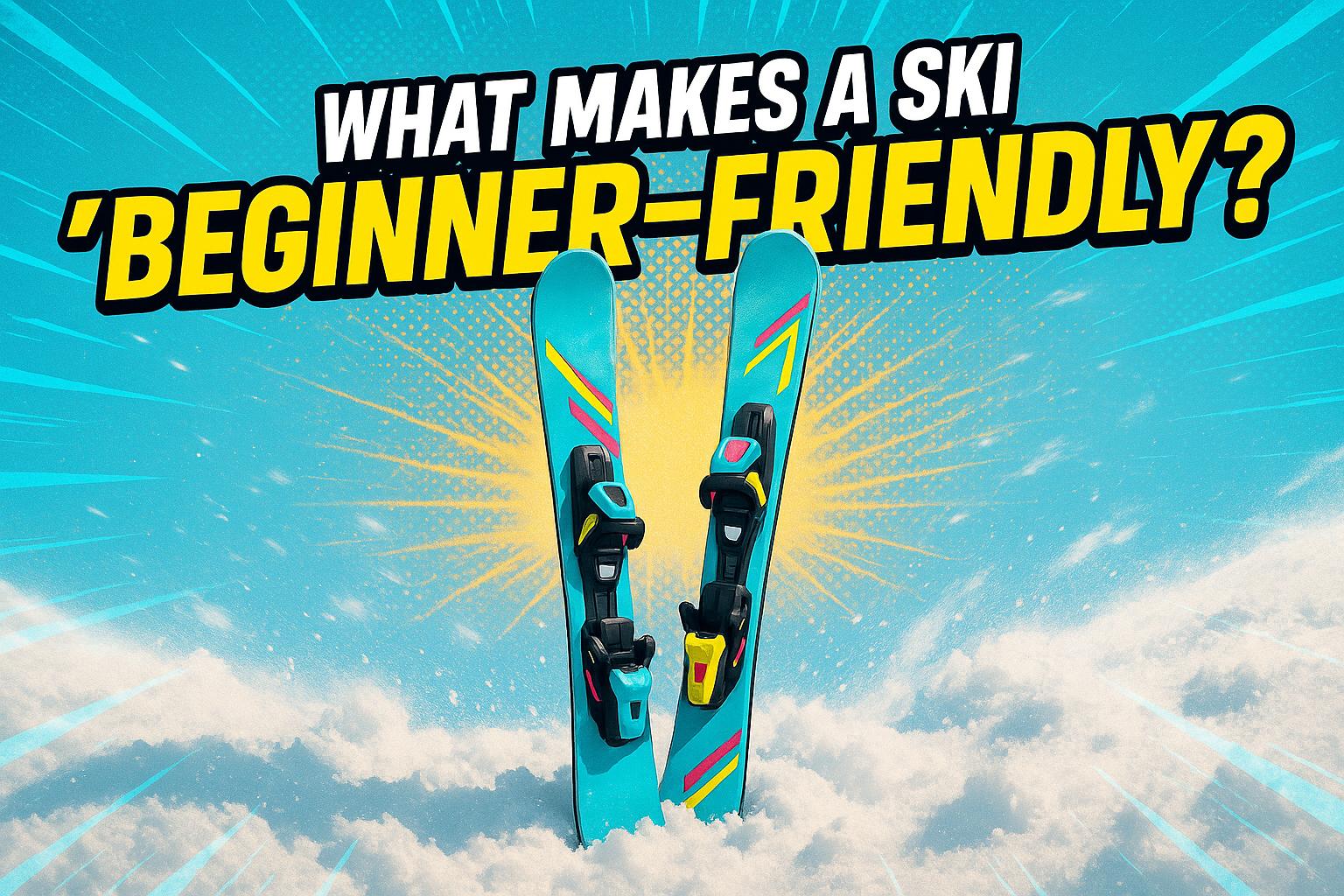










Leave a comment
This site is protected by hCaptcha and the hCaptcha Privacy Policy and Terms of Service apply.